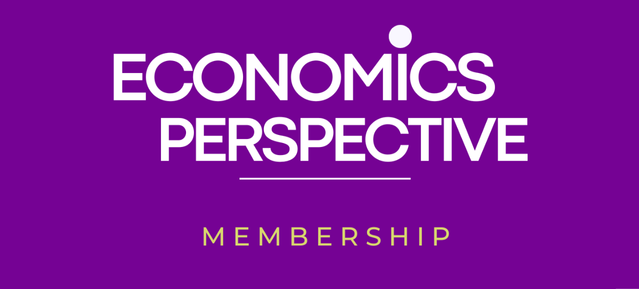Credit Card Cash Loss, Unknown Facts About Credit Cards
Generally, credit cards are regarded as a reliable and accessible variant to cash. Though, the credit cash system overlooked exposure denoted as credit card cash loss, which means financial destruction when consumers fall victim to fraud, hidden costs, misappropriation, or administrative failure of cash withdrawals. Such losses occur due to physical theft of a card by many individuals; the greater part of the financial burden takes place without the card ever departing the personal effects. The term refers to the financial loss suffered from credit limit abuse, fees, high interest, fraudulent withdrawals, or prohibited transactions. In the U.S. alone, credit card fraud losses hit $6.2 billion during 2023 because 62 million Americans were affected, and 92% of these incidents occurred without the physical loss of the card. It is projected that card fraud globally will come to a cost of $49 billion each year by 2030 if the current trends continue. The PYMNTS report mentioned that, in previous years, 28% of consumers were considered victims of credit cards. Forbidden access into credit card accounts worries 37% either very or extremely, furthermore. This widespread unease stresses the crucial prerequisite among these consumers that the bank will drive both prevention and resolution in fraudulent activity. Financial institutions must strengthen fraud detection capabilities. Institutions intervening in these cases build customer trust with satisfaction.
Free To Activate Membership

Consumers clearly believe that banks as well as credit card networks, not individual account holders, should prevent and resolve fraud. Most consumers, around 82%, believe that banks are responsible for resolving credit card fraud, and about 75% think they should be the ones to prevent it from happening in the first place. It's encouraging to see that banks are largely meeting these expectations. About 91% of people say their bank stepped in before they had to do anything themselves. Interestingly, customers feel satisfied most when banks proactively warn them concerning suspicious activity before consumers notice it. This forward method works to stop money loss. The approach does also build up trust and confidence within the bank.
In previous years 28%, which is nearly 3 out of 10 people, were affected by credit card fraud. The good part is many banks took quick action after the theft occurred. The good part is 90% of those banks took quick action after theft occurred and handled it smoothly, and consumers are extremely satisfied about the alertness, and responses differ among the consumers' loyalty. Besides these main points, the report also looks into how consumers prefer to be notified about fraud, with mobile alerts being the most popular method. It also explores what people do next, like requesting a new credit card, and how their worries vary across different groups. Besides, economist Alexei Alexandrov’s study shows that in 2024, the average U.S. household paid about $1,000 in hidden credit card fees, mainly through higher prices at retail stores caused by interchange fees, and in return, they rarely received major rewards. This creates a situation where lower-income consumers end up subsidizing wealthier users who get more benefits. In that same year, credit card companies in the U.S. received $148.5 billion, a record, from card acceptance fees. These costs are passed down to consumers, costing the average household nearly $1,200 each year because retailers include these fees in the prices we pay. Small businesses often deal with extra hidden fees like PCI penalties, batch charges, and statement fees, which can cost around $2,400 annually per business, costs that eventually raise prices for everyone. Using a credit card to get cash advances is also quite costly: typically, it involves a fee of 3 to 5% of the amount, no grace period for repayment, and immediate interest at about 30% APR, making even small cash withdrawals very expensive. Credit card fraud is becoming increasingly common. Within the U.S., the total losses from fraud shot up to $12.5 billion in 2024, and almost a million reported cases marked a 25% jump from the year before. In India, fraud related to credit cards coupled with online transactions jumped dramatically meanwhile. FY 23 saw ₹277 crore rise to ₹1,457 crore in FY 24. The number of such incidents also soared by 334%, reaching 29,082 cases. During the period of April to January of FY25, 2.4 million cases were filed under digital finance fraud with a total of ₹4,245 crore. That’s a 67% rise compared to ₹2,537 crore in FY 23. In FY23 there were 75,800 cases, and in FY24, up to 292,800 cases of surged virtual theft.
The financial damage increased too, jumping from ₹421 crore to ₹2,054 crore. Maharashtra bore the brunt, accounting for over a quarter of the losses, while Tamil Nadu followed with 23%. A survey involving 23,000 people found that nearly half, 47%, of Indians have fallen prey to some form of financial fraud in the past three years. Out of those, 43% experienced unauthorized charges on their credit cards, and 36% fell victim to UPI scams. When it comes to bank charges, HDFC Bank takes 2.5% of the withdrawal amount or at least ₹500, whichever is higher. ICICI charges between 2.5% and 3%, with a minimum fee of ₹250 to ₹500. Kotak Mahindra’s fees include ₹300 per ₹10,000 (up to ₹500 max) or 2.5%, whichever is greater. These fees often come with immediate interest charges and no reward points and can even hurt your credit score if you don’t pay back on time. The World Bank’s latest Global Payment Systems Survey from October 2023 looks at cashless transactions all over the world. It shows that the average number of cashless transactions per person increased from 91 in 2017 to 135 in 2020. Emerging economies with low and middle incomes saw these transactions double, while higher-income countries experienced a smaller growth of around 17% during the same period. As of 2025, about 79% of adults worldwide have a financial account, whether through banks or mobile money services, up from 74% in 2021. In low- and middle-income countries, the figure stands at around 75%. Many people were helped for them to get paid, to save, or to borrow by the usage of digital payments that grew from 35% to 57% in developing countries from 2014 to 2021. For assessing creditworthiness, it is an idea that the World Bank does also support via alternative data such as utility bills, rent payments, or mobile usage. This approach is in fact especially helpful for those in low-income countries because many of those people do not have any formal credit history, so it is easier for them to then access financial services.

